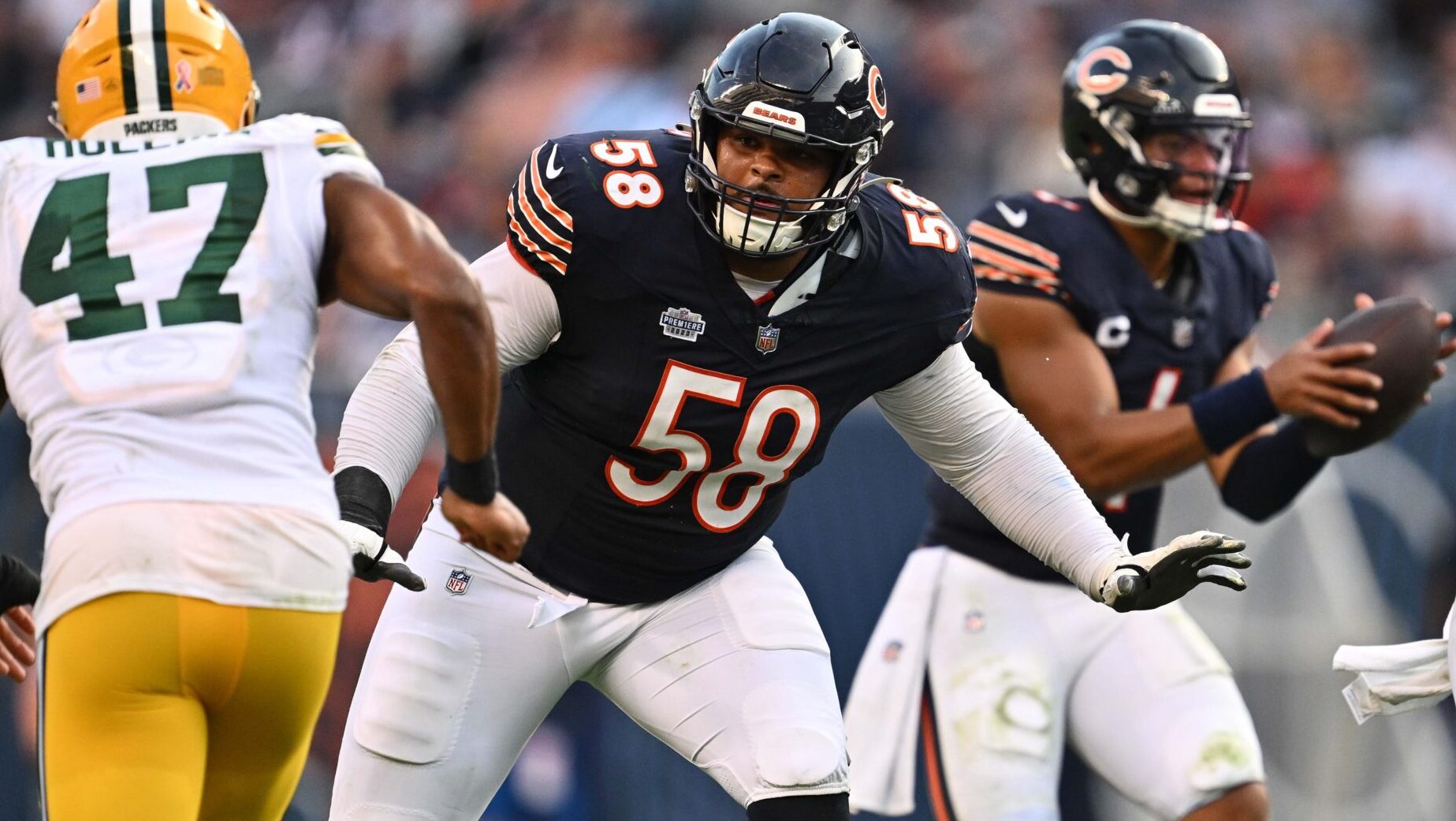Breakdowns
3/13/22
9 min read
NFL Contract Negotiations Part 3: The Negotiation

Nick Polk worked for the Atlanta Falcons for 18 years, most recently as the Director of Football Operations. Prior to his time with the Falcons, Polk held the Director of Football Operations title for NFL Europe for four years.
In parts one and two of our three-part series on Contract Negotiations, we discussed the importance of developing Club procedures and policies for Contract Negotiations and reviewed the process for evaluating and developing the "Market" at each position. We also covered the data sets appropriate to gather when entering a contract negotiation with an agent. In this final part of our three-part series on Negotiating Contracts, we will look at the key factors for developing an initial contract proposal through closing a deal with a player's agent.
Types of Contracts
The type of contract being negotiated often determines the leverage points, strategy, and preparation required for the negotiation.
- Reserve Future Signing
- Restricted Free Agents/Exclusive Rights Free Agents – tendered amounts set by the CBA
- Franchise/Transition Tags - tendered amounts set by the CBA
- Renegotiation/Extension
- Unrestricted Free Agent
- Drafted Rookie – CBA standards for language and length
- Undrafted Rookie – CFA – length and language set by CBA
- Veteran Salary Benefit [VSB]
- Street Free Agent
- Practice Squad
- Trades – the Club that acquires a player assumes the contract that player was under with the previous Club
Who (the Club or player representative) has the best leverage points is often determined by the type of contract required to acquire the player.
At this time of year, teams have begun to execute their strategic plan for the 2022 League Year. By now, teams have signed their Reserve Futures to contracts; they have determined if they will utilize the Franchise or Transition Tag and if they will tender their Restricted and Exclusive Rights Free Agents for the coming year.
As the start of the 2022 League Year approaches, Clubs have developed a targeted plan for acquiring key players to their rosters. These player acquisitions could come in the form of acquiring a player via trade; claiming a terminated player; signing a Street Free Agent; attempting to retain key players from their Club that will be Unrestricted Free Agents, or signing an Unrestricted Free Agent from another Club that hits the open market.
During the start of the Unrestricted Free Agency period, Clubs attempting to acquire a player early in this process are very often "negotiating against themselves in a vacuum." The reason is that the Clubs do not honestly know if they are the only Club involved or if multiple Clubs are attempting to acquire the player. This time period gives the player representative much more leverage in the negotiating process than the Club. It becomes the traditional "supply vs. demand" example. If four teams are trying to acquire the same player, the market value will rise dramatically, and the Club may need to "overpay" to acquire the player. Unfortunately for the Clubs, early in the process they do not know if they are the only team or if multiple teams are bidding for the player's services. As several weeks pass, the leverage begins to swing more to the Clubs favor as the demand for the player's services speaks by the offers he may or may not have. Patient teams can sign players at a better value than those signed in the first 10-14 days of the process.
Once a Club determines that it would like to either extend one of its own players, retain one of its current Unrestricted Free Agents, or sign an Unrestricted Free Agent that has hit the "Open" market, it is important to keep the following in mind:
Know Who You Are Negotiating With — Be Prepared!
- Study the Firm and the Agent(s)
- Historically what has been important to them?
- What have they done or not done in Contracts? [and why?]
- What style of negotiation do they use?
- Are you negotiating with one or more people in the Firm?
- Have a plan before you start the negotiation
- Be sure to develop and discuss internal strategy and approach of the negotiation
- Know your "Walk Away" point – maximum level you are willing to go
- Be detailed – point by point what is important to the Club
- Have both parties agree on how comparable contracts are being valued
[their comparables and yours are rarely the same, but how you value them is an important starting point – Guaranteed $ Time-of-Signing/ Total Guarantee$/3yr Cash/Total-Package/Average Per Year/Extension Average Per Year]
What is the "Style" of the Person(s) you are Negotiating With?
You must be flexible enough to adjust to the type of person you are negotiating with if you want to have success. Are they:
- Listener/Analytical
- Aggressive/Dominant – take charge/can't be wrong
- Deal Maker – Give and Take
- Angry - Got to get angry and yell before they can make a deal
- "Moody"
- My way or highway – need to learn to make them think they made the decision
- Detailed
- Snail – these negotiations take time, and you need to be patient – agreed-upon deadlines are a must
- Last-minute changer – try to sneak something in at the very end after you think you are done
What is Important to Both Parties?
What is important and how much each side is willing to give and take is often determined by the type of signing. As pointed out earlier, it often is about timing. Key points to be considered by both sides:
- Leverage points – often based on timing and the type of contract being signed
- Length of the Contract
- Structure of the Contract
- Guaranteed Cash – amounts and types
- 3 Year Cash
- Total Package
- Backside / Upside
- Max Package
- Language
- Are Deadlines "real" or "imaginary" – [Set Boundaries]
Developing the Initial Proposal:
When developing an initial proposal, it is important to review all market analysis and comparable contracts at the position – agent comparables will rarely match clubs. [Sometimes, especially early in free agency, markets can be reset due to the demand for the player's services] It is important to review age, injury, starts, honors, missed games – key stats and production for the position.
Review how signing this player will impact your salary cap now and in the future. The General Manager and coaching staff will review how a particular player will fit within the value determined at each position for the Club.
Determine the level that the Club is comfortable with as an organization to end the negotiation. It is essential to determine the initial proposal vs. ending point and have the room to negotiate issues as needed. In consultation with the Owner, Head Coach, and contract negotiator, the General Manager must determine the ceiling for each negotiation. This is the point when everyone is comfortable walking away and going to Plan B at the position. One of the most powerful tools you have as a negotiator is the ability to walk away and feel good about it.
Sometimes the best deal is the one you never do! Try not to let emotion get in the way of well-thought-out plans for negotiations. Making these decisions before the heat of the negotiation can save a Club valuable cash and salary cap room.
It is best not to start too low on an initial proposal but explain why you are trying to start at a fair level and may not have as much room to move [knowing the agent you are dealing with helps determine starting point based on previous negotiations; in some cases, you have no choice but to start lower].
Before discussing the initial proposal with the player representative, it is important to present and review key talking points with the General Manager and cash flow with the CFO. Confirm "ranges" that the General Manager and Owner are comfortable within all areas of the key negotiation points.
Set an initial call or in-person meeting to present the initial proposal to the agent once approved. Internally, be sure to determine the timing of counter-proposals. Keep track of all offers and counters from agents. Be prepared to share executive summaries and status reports with the General Manager and Owner on all negotiations.
Be a Good Listener!
To accomplish the goal of a "Win/Win" contract for both the player and the organization, both sides must be good listeners. Negotiations are all about people! Whether you are negotiating face to face or by phone, you need to be a good listener and ask the right questions:
Face to Face
- Listen with your ears, not your eyes
- Listen with your ears, not your mouth
- Most communication is non-verbal
- Try not to interrupt
- Ask the right questions in response
- Better to ask questions than to make statements – whereas statements can be used against you, questions need an answer
On the Phone [and via email]
- Listen with your ears, not your mouth
- Try not to interrupt
- Ask the right questions in response
- Better to ask questions than to make statements – whereas statements can be used against you, questions need an answer
Closing the Deal:
Negotiators must understand who has the leverage based on the signing type to reach a deal. Be sure to have research to back up your position(s) as the negotiation progresses. Set the "time frame /deadline" for the talks early in the process if needed (sometimes, there are actual deadlines set by CBA or negotiating "windows"). Have options to meet the goals of both parties. If possible, allow choices – and when possible, let both sides meet somewhere in the middle. Remember, "Cash is King!" – all deals need to fit within the Club's cash flow for each year of the agreement.
Never forget that you will probably have to work with this agent/firm again in the future – be fair, but try not to embarrass yourself [and hopefully they do the same]. You have an obligation to the Club while the agent is responsible to their client. Create a Win/Win whenever possible.
It is a good idea to send a draft copy of all language with each proposal. By doing so it is hard for the representative to say that what was agreed upon was different from what the language states. Be clear, concise, and consistent. Once you agree on a deal with the agent, be sure to review the language in detail as to avoid misunderstandings regarding intended terms.
From the start of the League year through the draft's conclusion, it is an exciting time period for General Managers and contract negotiators. Teams begin to take shape for the upcoming season over the next few months, but no one wins any games in the spring. Acquiring Players and negotiating contracts is a year-round process that will take place for each Club from the start of the League year through the following season. There is always another deal to be done!








